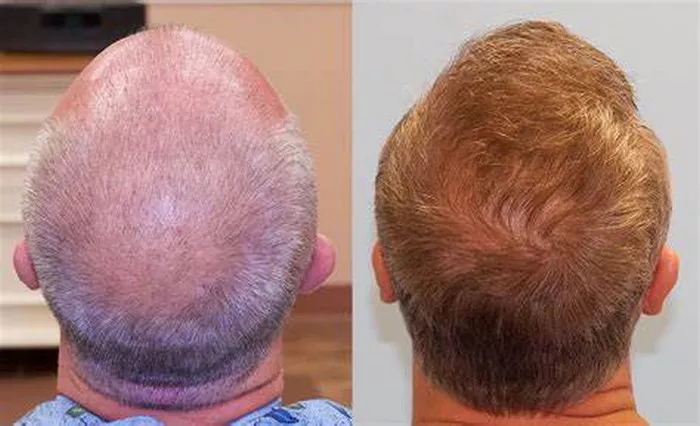Hair loss is a common concern affecting millions of people worldwide, especially men. One of the most frequent questions asked by those experiencing hair thinning or balding is: when does hair stop receding? Understanding the natural course of hair loss, its causes, and available treatment options is essential for managing expectations and making informed decisions. In this article, we will explore the factors that influence hair recession, when it typically stops, and how modern solutions like hair transplant surgery can help those struggling with hair loss.
What Causes Hair to Recede?
Hair recession, commonly known as a receding hairline, is most often linked to a genetic condition called androgenetic alopecia or male pattern baldness. This condition affects both men and women but is more pronounced and common in men. Hormonal changes, especially the sensitivity of hair follicles to dihydrotestosterone (DHT), cause the hair follicles to shrink over time. This leads to thinner hair and eventually hair follicles stop producing hair altogether.
Other factors that can contribute to hair recession include:
- Stress and traumatic events
- Poor nutrition and vitamin deficiencies
- Medical conditions such as thyroid disorders
- Medications that affect hair growth
- Environmental factors
Understanding the Timeline of Hair Recession
The timeline for hair recession varies widely among individuals and depends on the underlying cause and genetic predisposition. Typically, hair loss due to androgenetic alopecia follows a gradual pattern. For many men, hair begins to thin in their late teens to early twenties, but this can start earlier or later.
Generally, the hairline recedes slowly over several years. The key stages of hair loss progression include:
- Initial thinning: Hair becomes thinner along the temples and crown.
- Receding hairline: The hairline moves back, usually forming an “M” shape.
- Advanced recession: Large areas of the scalp become bald.
Most people experience significant recession by their 30s or 40s, but the rate varies. For some, hair loss stabilizes in midlife, while for others, it continues progressing. So, when does hair stop receding? It often stabilizes once the follicles become completely inactive, but this can take decades.
Does Hair Ever Stop Receding Naturally?
Hair recession typically does not stop abruptly. It is a slow, progressive process driven primarily by genetics and hormonal factors. However, in many cases, hair loss will eventually plateau. This plateau can happen when the susceptible hair follicles are fully miniaturized and no longer produce hair.
The age at which this stabilization happens varies. For some, hair loss may slow down or stop by their 40s or 50s. For others, it may continue into later years. Female pattern hair loss also tends to stabilize after a certain period but usually does not lead to complete baldness.
It is important to note that not all hair follicles are equally sensitive to DHT. Hair on the back and sides of the head typically remains unaffected, which is why these areas are commonly used in hair restoration procedures.
How to Manage Ongoing Hair Loss?
When hair loss continues without stopping, many seek treatments to slow or reverse the process. Options range from medical therapies to surgical solutions:
- Medications: FDA-approved drugs such as minoxidil and finasteride can help reduce hair loss and sometimes stimulate regrowth.
- Lifestyle changes: Improving diet, reducing stress, and avoiding damaging hair practices can support hair health.
- Hair transplant surgery: When medical treatments are insufficient, surgical options provide a long-term solution by relocating healthy hair follicles to balding areas.
Hair Transplant Surgery as a Solution
For many facing advanced hair recession, hair transplant surgery offers a reliable and lasting method to restore hair density. This procedure involves harvesting hair follicles from donor areas—usually the back or sides of the head—and transplanting them to the thinning or balding zones.
Modern techniques, such as Follicular Unit Extraction (FUE) and Follicular Unit Transplantation (FUT), enable natural-looking results with minimal downtime. While hair transplant surgery does not stop future hair loss in untreated areas, it effectively addresses visible recession and boosts confidence.
What to Expect After Hair Transplant Surgery?
After undergoing hair transplant surgery, patients enter the hair transplant recovery phase, which is critical for optimal results. Initially, transplanted hair may shed in the first few weeks—this is normal and part of the hair growth cycle. New hair growth typically begins within 3 to 4 months and continues improving over the following year.
Maintaining realistic expectations is important, as full results may take time. Additionally, patients may still experience hair loss in untreated areas, so combining surgery with medical therapies may be recommended.
When to Consider Medical Advice and Treatment?
If you notice persistent hair thinning or a receding hairline, early consultation with a dermatologist or hair specialist is advisable. Early diagnosis allows for better management and may slow or halt progression. A comprehensive evaluation can determine the cause of hair loss and suggest personalized treatment plans, including medications, lifestyle adjustments, or surgery.
Conclusion
Hair recession is a gradual process primarily influenced by genetics and hormonal factors. While the hairline and scalp areas affected by androgenetic alopecia tend to recede progressively, hair loss may stabilize or plateau in mid to late adulthood, though the timing varies by individual. Natural cessation of hair recession occurs when vulnerable follicles become dormant, but for many, hair loss continues for years.
Fortunately, advancements in treatments, especially hair transplant surgery, provide effective solutions to restore hair and improve appearance. Early intervention, combined with appropriate therapies and professional guidance, offers the best chance to manage hair loss effectively and regain confidence.
Related Topics:
- Can Menopause Cause Hair Loss? Experts Explain Causes and Treatments
- Do Hair Transplants Work? Insights and Reddit Discussions
- U.S. Hair Transplant Market Set for Robust Growth Through 2032


